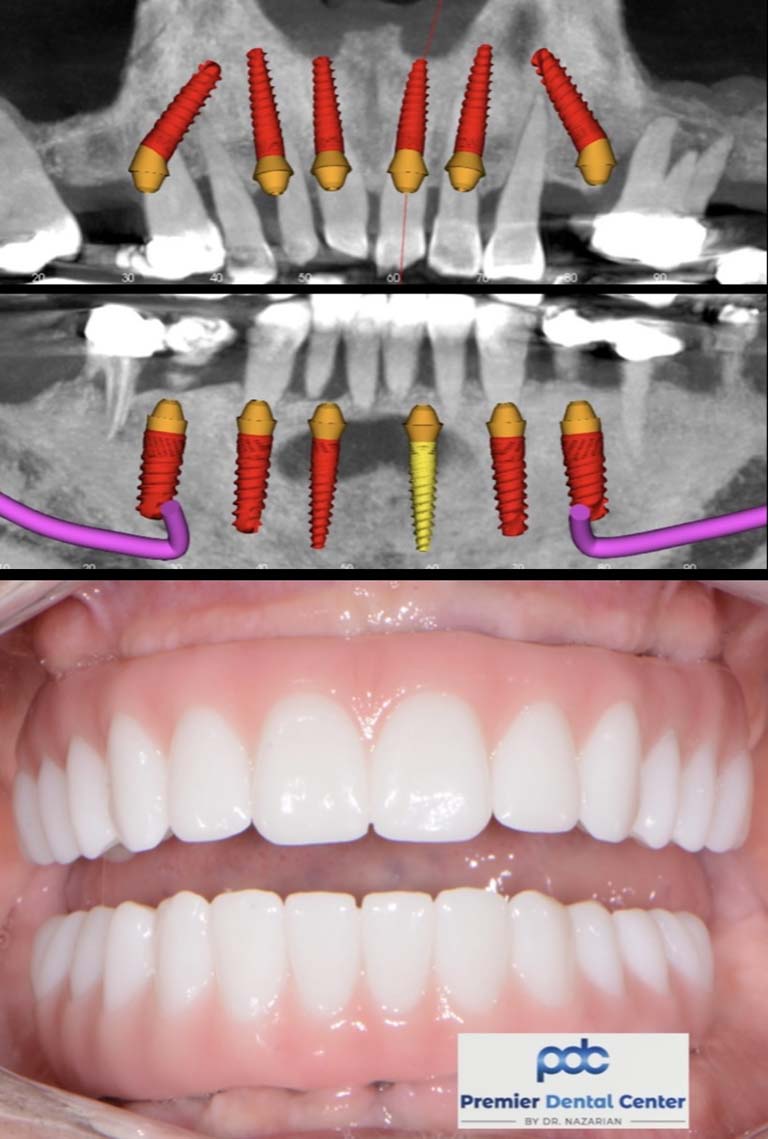The Dental Sense Diaries
The Dental Sense Diaries
Blog Article
Dental Sense Fundamentals Explained
Table of ContentsNot known Facts About Dental SenseThe 10-Minute Rule for Dental SenseHow Dental Sense can Save You Time, Stress, and Money.The Best Guide To Dental Sense
are medical gadgets operatively implanted into the jaw to bring back an individual's capacity to eat or their look. They give support for fabricated (fake) teeth, such as crowns, bridges, or dentures. When a tooth is lost due to injury or disease, a person can experience issues such as quick bone loss, malfunctioning speech, or adjustments to chewing patterns that cause discomfort.Oral dental implant systems contain an oral implant body and dental implant abutment and may also consist of a joint fixation screw. Same day dental implants. The dental implant body is surgically placed in the jawbone in location of the tooth's root. The oral implant joint is usually affixed to the implant body by the joint addiction screw and prolongs through gums into the mouth to sustain the affixed man-made teeth
(https://gravatar.com/futuristiccreativelyc881a796d5)Framework of The Dental Implant System choosing oral implants, speak to your oral company about the potential benefits and dangers, and whether you are a prospect for the treatment. Points to think about: Your overall health is a crucial variable in determining whether you are a great prospect for dental implants, for how long it will certainly require to heal, and how much time the dental implant might remain in location.
Smoking may affect the recovery procedure and decrease the long-term success of the dental implant. The recovery process for the implant body may take numerous months or longer, throughout which time you typically have a short-term joint instead of the tooth. the dental implant treatment: Carefully adhere to the oral hygiene guidelines provided to you by your dental service provider.
Not known Factual Statements About Dental Sense
Implant failure can result in the need for one more medical procedure to take care of or replace the dental implant system. Recovers the capability to chew Brings back cosmetic appearance Assists keep the jawbone from diminishing due to bone loss Maintains the wellness of the bordering bone and gums Assists keep surrounding (nearby) teeth secure Boosts quality of life Damage to surrounding natural teeth during dental implant placement Injury to the surrounding tissues throughout surgery, such as sinus opening Injury during surgical procedure (as an example, crack of bordering jawbone) Poor function, such as really feeling like the teeth do not bite with each other typically An experience that the tooth is loosened or twisting in area arising from a joint screw loosening up Implant body failing (looseness of the implant body) due to systemic infection, which might be more probable in individuals with uncontrolled diabetics issues as a result of neighborhood infection in bone and periodontals sustaining the dental implant body because of postponed healing, which may be more probable in people who smoke Difficulty cleaning the periodontals around the implant, resulting in poor oral hygiene Without treatment gum illness Post-surgical pins and needles because of nerve impingement or damage Always inform wellness treatment carriers and imaging service technicians that you have dental implants before any type of magnetic resonance imaging (MRI) or x-ray procedures.
FDA is not familiar with any adverse occasions reported for MRI or x-ray treatments with dental implants. Dental implants systems are typically constructed from materials that adhere to global agreement requirements of the International Organization for Standardization (ISO) or ASTM International. These criteria have details of what makes a safe material.

A dental implant is a structure that replaces a missing tooth. With screw-like devices, the cosmetic surgeon inserts a dental implant into the jawbone, and it acts as a support for an artificial tooth, called a crown.
Some Ideas on Dental Sense You Need To Know
Some people are not qualified for dental implant surgical procedure. It is for dental surgeons to operate individuals with: severe illnessuncontrollable metabolic diseasebone or my explanation soft tissue illness or infectionIf these problems are resolved, a person can have the surgical procedure. In, dental specialists avoid from running on individuals with: If people with any of the above go through oral implant surgery, there is a higher risk of the dental implant failing.

Dental dental implant surgical procedure is an individualized procedure. It's not the same for everybody. Yet the following provides a basic overview of what you can anticipate your dental practitioner, dental surgeon, periodontist or prosthodontist to do: Put the implant surgically. Give you time to heal. Affix the post and last crown, bridge or denture.
Next, your cosmetic surgeon will very carefully put the dental implant into your jaw. If your implant is near the front of your mouth, your dental practitioner will certainly make a short-term tooth for you to use until you heal.
Dental Sense Things To Know Before You Get This
Your service provider can inform you what to expect in your circumstance. During the healing stage, your jawbone needs to fuse to the dental implant. This process, called osseointegration, is crucial for security and long-term success. This procedure can take anywhere from three to 9 months. In many cases, it may take longer.
When your implant heals, your dental practitioner can attach the abutment (tiny connector blog post) and your final restoration (crown, bridge or denture). This usually takes regarding one hour to complete and might need a second small surgical treatment. You should not really feel any type of discomfort during your dental implant procedure since your service provider will make use of drug to numb your gum tissues.
Report this page